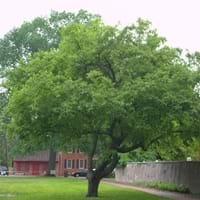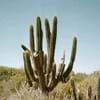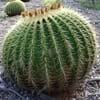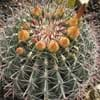Life Span
Perennial
Perennial
Type
Cactus or Succulent
Flowering Plants, Fruits, Trees
Origin
North America, Latin America and the Caribbean, Central America, South America, Brazil
Central America, Europe, North America
Types
Not available
Not Available
Habitat
shrublands
Hedge, Scrubs, Woods
USDA Hardiness Zone
12-15
4-8
AHS Heat Zone
12-10
Not Available
Sunset Zone
12, 13, 16, 17, 21, 22, 23, 24
Not Available
Habit
Upright/Erect
Not Available
Flower Color
White, Yellow, Red, Purple, Orange, Rose
White
Flower Color Modifier
Not Available
Not Available
Fruit Color
Not Available
Yellow
Leaf Color in Spring
Not Available
Dark Green
Leaf Color in Summer
Not Available
Green
Leaf Color in Fall
Not Available
Brown, Green, Light Yellow
Leaf Color in Winter
Not Available
Not Available
Leaf Shape
Succulent
Oblong
Plant Season
Not Available
Summer
Sunlight
Full Sun, Partial Sun, Partial shade
Full Sun, Partial shade
Type of Soil
Loam, Sand
Loamy
The pH of Soil
Acidic, Neutral, Alkaline
Neutral
Soil Drainage
Well drained
Well drained
Bloom Time
Spring
Fall, Summer
Tolerances
Drought
Drought
Where to Plant?
Ground, Pot
Ground
How to Plant?
Cuttings
Grafting, Seedlings, Transplanting
Plant Maintenance
Medium
Medium
Watering Requirements
Keep ground moist, Keep immersed in water, Requires more often in extreme heat
Medium
In Summer
Lots of watering
Lots of watering
In Spring
Moderate
Moderate
In Winter
Average Water
Average Water
Soil pH
Acidic, Neutral, Alkaline
Neutral
Soil Type
Loam, Sand
Loamy
Soil Drainage Capacity
Well drained
Well drained
Sun Exposure
Full Sun, Partial Sun, Partial shade
Full Sun, Partial shade
Pruning
Prune to stimulate growth
Prune when plant is dormant, Remove dead or diseased plant parts
Fertilizers
6-12-12 or 5-10-10
All-Purpose Liquid Fertilizer
Pests and Diseases
Mealybugs, Red spider mite, Scale insects, Slugs, Snails
Aphids, Curculio occidentis, Japanese Beetles, Leaf Rollers, Leafminer, Mites, Red blotch, sawflies, Scale, Stink bugs
Plant Tolerance
Drought
Drought
Flower Petal Number
Single
Single
Fragrant Flower
Not Available
Yes
Fragrant Fruit
Not Available
No
Foliage Texture
Bold
Medium
Foliage Sheen
Not Available
Matte
Attracts
Hummingbirds
Not Available
Allergy
drowsiness, Nausea, Vomiting
Digestive Problems, Respiratory problems
Aesthetic Uses
Beautification, Decorating walls, Showy Purposes, Used for decorating walls, fences, gates, hedges, etc.
Showy Purposes
Beauty Benefits
Not Available
Beautiful Skin
Environmental Uses
Air purification
Food for birds
Medicinal Uses
Aphrodisiac, Tonic
Anthelmintic, Antibacterial, Astringent, Hypnotic, Laxative, Refrigerant
Part of Plant Used
extracted oil
Fruits
Other Uses
Used as Ornamental plant, Used for its medicinal properties, Used for Landscaping
Edible syrup, Jam, Jelly, Used As Food
Used As Indoor Plant
Yes
No
Used As Outdoor Plant
Yes
Yes
Garden Design
Container, Houseplant, Rock Garden, Wall
Not Available
Botanical Name
ECHINOPSIS pachanoi
Malus sylvestris
Common Name
San Pedro
European crab apple
In Hindi
सैन पेड्रो
european crab apple
In German
Echinopsis pachanoi
Der Holzapfel, Europäischer Wildapfel
In French
Echinopsis pachanoi
Le Boquettier, le Pommier sauvage ou Pommier des bois
In Spanish
Echinopsis pachanoi
Malus sylvestris, el Manzano silvestre, manzano silvestre europeo
In Greek
San Pedro κάκτος
Ευρωπαϊκή μήλο καβουριών
In Portuguese
Wachuma
Malus sylvestris
In Polish
San pedro (kaktus)
Jabłoń dzika
In Latin
San Pedro
european crab apple
Phylum
Tracheophyta
Magnoliophyta
Class
Magnoliopsida
Magnoliopsida
Order
Caryophyllales
Rosales
Family
Cactaceae
Rosaceae
Clade
Angiosperms, Core eudicots, Eudicots
Angiosperms, Eudicots, Rosids
Tribe
Trichocereeae
Not Available
Subfamily
Cactoideae
Not Available
Number of Species
Not Available
Not Available
Season and Care of San Pedro and European Crab Apple
Season and care of San Pedro and European Crab Apple is important to know. While considering everything about San Pedro and European Crab Apple Care, growing season is an essential factor. San Pedro season is Not Available and European Crab Apple season is Not Available. The type of soil for San Pedro is Loam, Sand and for European Crab Apple is Loamy while the PH of soil for San Pedro is Acidic, Neutral, Alkaline and for European Crab Apple is Neutral.
San Pedro and European Crab Apple Physical Information
San Pedro and European Crab Apple physical information is very important for comparison. San Pedro height is 30.00 cm and width 15.20 cm whereas European Crab Apple height is 25.00 cm and width 20.00 cm. The color specification of San Pedro and European Crab Apple are as follows:
San Pedro flower color: White, Yellow, Red, Purple, Orange and Rose
San Pedro leaf color: Not Available
European Crab Apple flower color: White
- European Crab Apple leaf color: Dark Green
Care of San Pedro and European Crab Apple
Care of San Pedro and European Crab Apple include pruning, fertilizers, watering etc. San Pedro pruning is done Prune to stimulate growth and European Crab Apple pruning is done Prune when plant is dormant and Remove dead or diseased plant parts. In summer San Pedro needs Lots of watering and in winter, it needs Average Water. Whereas, in summer European Crab Apple needs Lots of watering and in winter, it needs Average Water.





